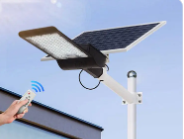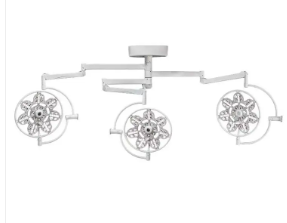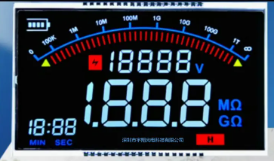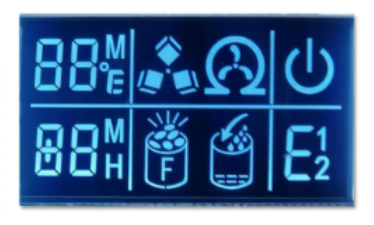LED Metal Core PCB Heat Dissipation Technology Analysis (Detailed Explanation)
Origin of LED Metal Core PCB Development
The development process of LED chips, core components of modern lighting, displays and electronic devices is closely related to the progress of science and technology. At present, LED chips have become an indispensable key material in many fields such as lighting, display, backlight and sensor.
MCPCB is an indispensable part of LED lighting system. In order to ensure that the technology operates in the best way, it is crucial to thoroughly understand its characteristics. Let's first understand LED Metal Core PCB.
-----------------------------------
| Silkscreen Layer |
-----------------------------------
| Solder Mask Layer |
-----------------------------------
| Copper Circuit Layer |
-----------------------------------
| Dielectric Layer |
-----------------------------------
| Metal Substrate |
-----------------------------------
| Protective Coating |
-----------------------------------
The above diagram is the structure of LED Metal Core PCB.
The core feature of MetalCorePCB is the use of metal materials (usually aluminum or copper) as a substrate to improve thermal conductivity and mechanical strength. The structure of MCPCB mainly includes the following key layers:
(1). Metal substrate
The metal substrate is the main component of MCPCB and directly determines the heat dissipation performance and mechanical strength of PCB. Common metal substrate materials include:
Aluminum is the most common MCPCB substrate material with good thermal conductivity (about 150-200W/m·K), light weight and low cost, suitable for general LED lighting and power electronics products. Copper has higher thermal conductivity than aluminum (about 380-400W/m·K), but the cost is higher. It is mainly used for high-power LED and high heat dissipation applications such as automotive electronics and communication equipment. Although stainless steel has poorer thermal conductivity than aluminum and copper, it has strong mechanical strength and is suitable for special environment applications with high durability requirements.
(2). Dielectric layer
The dielectric layer is a key layer in MCPCB, located between the metal substrate and the circuit layer, and mainly plays the dual role of electrical insulation and thermal conductivity.
Mainly use insulating materials with high thermal conductivity (1-5W/m·K), such as epoxy, polyimide (PI), and ceramic-filled polymer. This layer needs to be thick enough (usually 50μm-150μm) to provide reliable electrical insulation, but it should not be too thick to avoid affecting the thermal conductivity.
(3). Conductive layer (Copper circuit layer)
The conductive layer is the circuit part of the MCPCB, which is made of copper foil, similar to the copper layer of traditional PCB, but generally thicker than the copper layer on the standard FR4PCB to meet the requirements of high current load and low resistance.
The thickness of the copper foil is usually between 1oz (35μm) and 6oz (210μm). The appropriate thickness is selected according to the application requirements. The required circuit pattern is formed by etching or laser processing. In some high-power applications, electroplating processes such as tin (Sn), gold (Au) or silver (Ag) can also be used to improve soldering performance and oxidation resistance.
(4) Protection layer (Resistance wire mesh)
The protection layer includes:
The solder mask (about solder mask) is used to protect the copper circuit from short circuit and oxidation, usually in green, white or black ink. The silk screen layer (Printed by screen printing) is used to mark the location of components, company logo, product model and other information.
(5). Thermal through hole (Hot channel, suitable for multilayer MCPCB)
For multilayer MCPCB or high-power applications, it may increase the thermal through hole (passage of heat) to enhance the heat dissipation effect.
These through holes can be filled with thermal paste (Hot paste) or copper pillars (sheet copper) to further reduce thermal resistance and improve the overall heat dissipation performance.
Development History of LED Chips and Metal Core PCB
Since the invention of LED technology in the 1960s, the LED industry has undergone a transformative journey from fundamental research to widespread industrial applications. Over decades of development, the global LED market has expanded significantly, with continuous technological breakthroughs and increasingly diverse product applications.
1. Lighting Applications
The luminous efficacy and lifespan of LED chips have now matched or surpassed those of traditional lighting products, giving LED lighting clear advantages in energy efficiency, environmental sustainability, and health benefits.
With technological advancements, the luminous efficacy of LED chips has steadily improved, costs have decreased, and market acceptance has grown. LED lighting products have gradually replaced traditional incandescent and fluorescent lamps.
2. Display Technology
The application of LED chips in displays has evolved from early indicator lights and numeric displays to color screens and LCD TV backlighting, profoundly impacting the display industry.
As miniLED and microLED technologies mature, LED chips are enabling ultra-high resolution, ultra-thin, and ultra-bright display applications. These advancements are expected to drive the next generation of display technologies.
3. Emerging Applications
With the rise of IoT (Internet of Things), smart homes, and other emerging industries, LED chips are increasingly used in sensor communication and related fields.
In smart homes, LED chips enable functions like adjustable lighting and ambient atmosphere creation.
In IoT, LED chips serve as low-cost, low-power sensors for environmental monitoring, motion detection, and more.
These new applications are creating fresh growth opportunities for the LED chip industry.
LED Lighting Trends and Thermal Challenges
The continuous advancement of Solid-State Lighting (SSL) technology has driven significant improvements in LED luminous efficacy, enabling LEDs to replace traditional light sources. Current LED efficacy now exceeds that of incandescent and halogen lamps and continues to grow (as shown in Figure 1).
Some companies have developed LED components with efficacy exceeding 100 lm/W, further broadening LED applications. These include indoor/outdoor lighting, smartphone backlight modules, automotive turn signals, and high-wattage projectors, streetlights, large backlight modules, and automotive headlights.
Advantages such as energy savings, environmental friendliness, and long lifespan reinforce the trend toward LED lighting becoming the dominant mainstream technology.
Different applications of LED metal core PCB in consumer electronics
1. Consumer electronics industry.
Consumer Electronics Applications | Advantages |
Mobile Phones | Reduce heat from high-end processors |
Tablets | Extend battery life and enhance touch screen sensitivity |
Gaming Consoles | Maintain effective communication between CPU/GPU and memory components |
Televisions | Efficient power management for better color accuracy and contrast |
Home Automation | Dimmable lighting fixtures with improved lumen output |
Audio Peripherals | Lower system noise by blocking EMI/RFI interference |
CCTV Cameras | Reduce thermal stress on optical/detection sensors; complement night vision technology |
2. Medical Industry applications
Medical Industry Applications | Advantages |
Surgical Lights | Provide high-intensity illumination while reducing heat buildup, efficiently dissipating heat to avoid overheating impacts on the surgical environment, ensuring stable operation over extended periods. |
Scanning Equipment (e.g., MRI, CT) | Improve circuit heat dissipation, enhancing device stability and imaging accuracy. |
Wearable Health Devices | Reduce circuit heat generation, improving sensor accuracy and battery life. |
3. Automotive Industry Applications
Automotive Industry Applications | Advantages |
Headlights and Taillights | Improve light efficiency, reduce heat, and extend the lifespan of the lighting fixtures. |
Electric Vehicle Battery Management Systems (BMS) | Optimize heat dissipation, enhance battery charging and discharging efficiency, and improve safety. |
Central Control Displays and Dashboards | Lower the temperature of electronic components, extend device lifespan, and improve display stability. |
4. Industrial Lighting and Automation Industry Applications
Industrial Lighting and Automation Industry | Advantages |
LED Workshop Lighting | Enhance energy efficiency, reduce maintenance requirements, and extend the lifespan of lighting fixtures. |
Industrial Robots | Optimize heat dissipation for electronic control units, improving operational stability of robots. |
Smart Control Panels | Enhance heat dissipation capabilities for high-power components, ensuring long-term reliability. |
5. Aerospace Industry Applications
Aerospace Industry Applications | Advantages |
Aircraft Cockpit Displays | Improve heat dissipation efficiency of electronic equipment, reduce weight, and enhance energy efficiency. |
Satellite Communication Systems | Increase heat resistance of electronic modules, ensuring long-term stability of aerospace equipment. |
Navigation and Lighting Systems | Improve light efficiency, reduce energy consumption, and adapt to extreme environmental temperatures. |
6. Home Appliance Industry Applications
Home Appliance Industry Applications | Advantages |
Refrigerator Displays | Used for backlighting in refrigerator temperature control panels.Efficient heat dissipation ensures clear visibility of the display. |
Microwave Oven | Increase heat resistance of electronic modules, ensuring Used |
7. Public Facilities Applications
Public Facilities Applications | Advantages |
Street Lights | Used for high-brightness LED street lights.Efficient heat dissipation, adaptable to outdoor high and low-temperature environments, extending service life. |
Landscape Lighting | Used for decorative LED lighting in parks and buildings.Improved energy efficiency and reduced maintenance costs. |




LED Layout and Wiring Technology Analysis
PCB design is essential for reliable electronic products. The first step to the success of metal core PCBs is to complete a perfect PCB design. The placement of LED components and the creation of networks are very important for metal core PCBs. The location of LEDs affects the lighting intensity and distribution. Wiring sets the path for data transmission and power supply through wires. A good LED setup ensures that each component is balanced and does not overheat or overload.
To design an efficient and effective LED metal core PCB, various factors need to be considered. In order to address the design considerations of LED metal core PCBs, including thermal management, trace width and spacing, node placement, and LED arrangement and direction, we need to clearly understand the importance of each aspect. To ensure good heat dissipation, electrical reliability, and mechanical stability. The following are the main design considerations:
1. Material selection
Substrate material: Common substrate materials are aluminum-based and copper-based PCBs. Aluminum-based is cost-effective, and copper-based has better thermal conductivity but higher cost.
Insulation layer (dielectric layer): Insulation materials with high thermal conductivity, such as ceramic-filled polymers, are selected to improve thermal conduction efficiency.
Copper foil thickness: Choose the appropriate thickness according to the current demand, the common range is 1oz (35μm) to 3oz (105μm).
2. Circuit design
Wiring and heat dissipation are the key to LED metal core PCB. The spacing of the wiring will affect the heat dissipation and current carrying capacity, so we must carefully select the trace width and spacing.
When selecting the trace width and spacing, please consider the operating temperature, total power consumption, performance level and circuit board environment. Recently, narrow traces and tight spacing have been used in LED strip lighting fixtures. But this can cause excessive heat accumulation, resulting in prototype failure. We must consider the trace width and spacing more seriously to avoid such risks in the future.
Indeed, wiring and heat dissipation are core issues in the design of LED metal core PCB (MCPCB), especially the choice of trace width and spacing will directly affect the heat dissipation performance, current carrying capacity and the reliability of the circuit. Here are some key considerations and design recommendations to help avoid heat dissipation issues and prototype failures caused by improper routing:
(1). Trace width and current carrying capacity
Current carrying capacity: Trace width determines the current it can carry. Excessive current will cause the trace to heat up, affecting LED performance and life.
Refer to the IPC-2221 standard to calculate the trace width based on the current and allowable temperature rise.
For example, with a 1oz copper thickness (35µm), a 1mm wide trace can carry about 1.5A of current (temperature rise of 10°C).
Power consumption and temperature rise: LED light strips usually have a large operating current, and the trace width needs to be adjusted based on the total power consumption and heat dissipation capacity to avoid local overheating.
(2). Trace spacing and heat dissipation
Too small spacing: causes heat concentration and increases local temperature rise. It may cause electrical short circuits or insulation failure.
Too large spacing: wastes PCB space and increases costs. It may affect signal integrity (in high-frequency circuits).
Recommendation: For LED light strips, the trace spacing should be at least 1.5 times the trace width to ensure heat dissipation and electrical safety. In high-power LED applications, the spacing should be further increased to avoid heat accumulation.
(3). Operating temperature and environment
Operating temperature: The operating temperature of the LED directly affects its light efficiency and life. The design of trace width and spacing must ensure that the PCB temperature is within a safe range. Use thermal simulation tools (such as ANSYS, Flotherm) to evaluate the thermal performance of the wiring design.
Ambient temperature: If the PCB is used in a high-temperature environment (such as outdoor lighting), the trace width and spacing must be further increased to cope with the additional heat load.
(4). Risks of narrow traces and tight spacing
Heat accumulation: Narrow traces and tight spacing will result in heat that cannot be effectively dissipated, increasing local temperature rise, which may cause LED failure or PCB delamination.
Degradation of electrical performance: High temperature will reduce the performance of the insulation layer and increase the risk of short circuits.
Solution: Avoid excessive pursuit of compact design and give priority to heat dissipation and reliability.
Add thermal vias or use insulating materials with higher thermal conductivity in high-density wiring areas.
(5). Node placement and future expansion
Node placement: The location of nodes (such as pads, vias) on the LED metal core PCB will affect wiring and heat dissipation. Nodes should be distributed as evenly as possible to avoid heat concentration. High-power nodes (such as LED driver circuits) should be close to heat dissipation paths (such as metal substrates).
Future expansion:
Reserve a certain amount of wiring space during design to facilitate future upgrades or modifications. Consider modular design to facilitate replacement or expansion of LED modules.
(6). Design verification and testing
Thermal simulation: Use thermal simulation tools to evaluate the thermal performance of the wiring design during the design phase and optimize the trace width and spacing.
Prototype testing:
Measure the temperature of key nodes on the PCB to ensure that it is within a safe range.
Check for local overheating or electrical failures.
(7). Practical design recommendations
Trace width:
Low-power LED: 0.2mm - 0.5mm.
High-power LED: 1mm - 2mm (adjusted according to current size).
Trace spacing:
Low-power LED: ≥ 0.2mm.
High-power LED: ≥ 0.5mm.
Copper thickness:
General application: 1oz (35µm).
High-power application: 2oz (70µm) or higher.
Summary
In LED metal core PCB design, the selection of trace width and spacing needs to balance electrical performance, heat dissipation and cost. Although narrow traces and close spacing can save space, they may bring heat dissipation problems and reliability risks. Through reasonable design, thermal simulation and prototype testing, these problems can be effectively avoided to ensure the long-term stable operation of the PCB. In the future, with the advancement of LED technology, node placement and wiring design may become more complex, so scalability and flexibility should be fully considered during design.
3. Electrical testing.
After our LED metal core PCB design is put into production, it must undergo rigorous testing to ensure product safety and optimal performance.
Visual Inspection
Visual inspection is required to inspect LED metal core PCB. This includes observing the surface and components of the board. It helps to identify any visible defects such as cracks, scratches, soldering or layout issues that may affect performance.
Inspectors must evaluate visible attributes and verify whether they meet standards, requirements and specifications. Any deviation may lead to failure. Visual inspection is the simplest and most direct type of inspection. Through this inspection, we can check whether the surface and components are intact.
Electrical Testing
Testing electrical components in LED metal core PCB is an important part of the manufacturing process. In order to ensure optimal performance and expected life, multiple tests are required. To ensure its performance and reliability. Commonly used tests include continuity test, insulation resistance test, withstand voltage test, functional test, flying probe test, impedance test, thermal fault detection and X-ray detection. According to the specific application scenario and needs, choosing the right combination of test methods can effectively improve product quality and yield.
(1). Open and Short Circuit Test
Purpose: Detect whether there is a break (open circuit) or short circuit to ensure circuit integrity.
Method:
Flying Probe Test: Use movable probes to test the conductive paths on the PCB, suitable for small-volume production or prototype verification.
Bed of Nails Test: Use a fixed probe grid to test multiple nodes at the same time, suitable for mass production.
(2). Insulation Resistance Test
Purpose: Ensure the insulation between different circuits to prevent leakage or electrical breakdown.
Method:
Apply high-voltage direct current (DC 100V ~ 1000V) to measure the insulation resistance between different electrodes, usually requiring more than 100MΩ.
(3). Hi-Pot Test, High Voltage Test
Purpose: Check the high-voltage resistance of the PCB dielectric layer to ensure that it will not be electrically broken down in a high-voltage environment.
Method:
Apply a DC or AC voltage several times higher than the working voltage (e.g. 1.5kV) to test whether the PCB insulation layer is broken down or the leakage current exceeds the standard.
(4). Contact Resistance Test
Purpose: Detect the resistance value of PCB traces to ensure low power consumption and efficient energy transmission.
Method:
Use the four-wire method (Kelvin Test) to accurately measure small resistance values and avoid test errors.
(5). Functional Test (FCT)
Purpose: Simulate the actual working state of LED PCB and detect the overall electrical performance.
Method:
Lighting Test: Power the LED and check whether it emits light normally.
Voltage/current test: Ensure that the power of LED and circuit components meets the design requirements.
PWM (Pulse Width Modulation) Control Test: Check LED dimming and power management functions.
(6). High Temperature Aging Test (Burn-In Test)
Purpose: Detect the stability and life of LED PCB under long-term high temperature operation.
Method:
Operate LED for a long time in a high temperature environment (85℃ ~ 125℃) to observe whether there are any faults, such as light decay, flickering or current abnormality.
(7). EMI/EMC test (electromagnetic compatibility test)
Purpose: To ensure that the LED PCB does not generate excessive electromagnetic interference (EMI) and is not interfered by the external electromagnetic environment (EMC).
Method:
Radiated emission test: Measure whether the electromagnetic waves during the operation of the PCB meet industry standards (such as FCC, CE).
Conducted interference test: Detect whether the interference of the LED drive circuit to the power line exceeds the standard.
Possible changes in future LED metal core PCB design
Intelligent thermal management routing: In the future, intelligent algorithms may be used for PCB routing optimization, combined with thermal simulation tools (such as ANSYS, Altium Designer) to dynamically adjust routing width and layout. Variable thickness copper foil may be integrated to thicken the copper layer in high current areas to improve heat dissipation.
New materials: Future MCPCBs may use graphene-enhanced thermal conductive layers or ceramic composite substrates (such as aluminum nitride, beryllium oxide) to improve overall thermal conductivity.
It may even introduce flexible metal substrates to provide better thermal management in applications such as LED light strips.
Three-dimensional wiring technology: The current PCB design is mainly planar routing, which may develop into three-dimensional wiring in the future, adding three-dimensional thermal conductive paths in multi-layer PCB structures to improve heat dissipation.
For example, using embedded thermal channels to conduct heat to the heat sink or housing more efficiently.
Active cooling technology
In the future, LED PCBs may integrate micro heat pipes or phase change materials (PCM) to manage heat more efficiently in high-power LED designs.
It may even be combined with thermoelectric cooling technology (such as Peltier elements) to improve the stability of LEDs in extreme environments.
Conclusion
The optimization of wiring width and spacing remains the key to future LED metal core PCB design, but materials, heat dissipation structure and intelligent design will become important factors affecting the future development of LED PCBs.
Who knows what the future of node placement of LED PCBs will be like? Perhaps in the future, LED lighting will directly adopt chip-level cooling, and even no longer rely on traditional PCBs, but adopt new integrated packages (such as Chip-on-Board, COB). This may completely change the way LED PCBs are designed.





